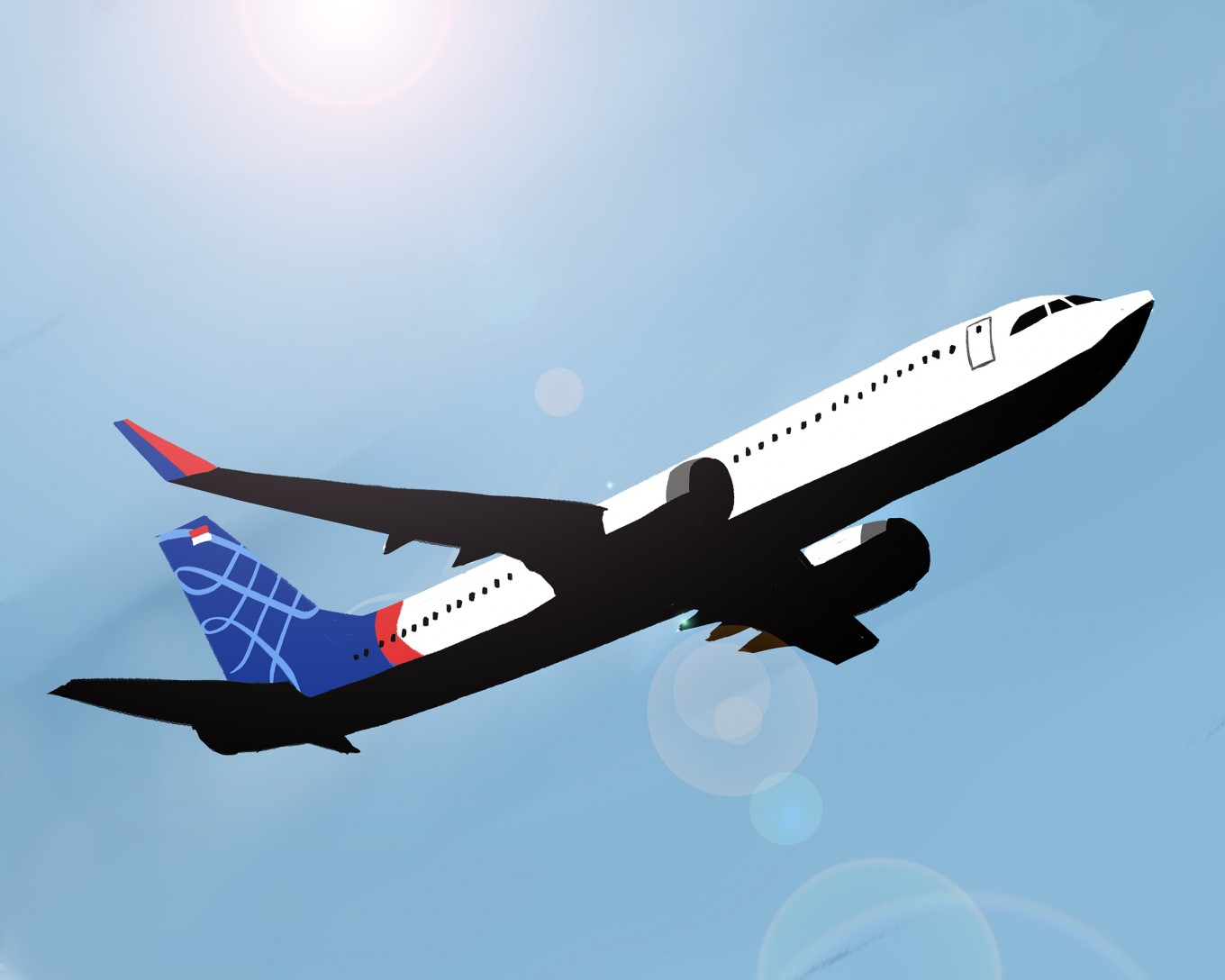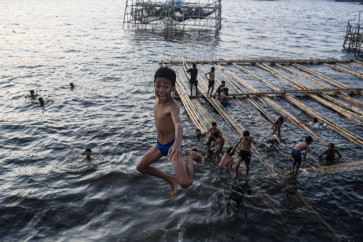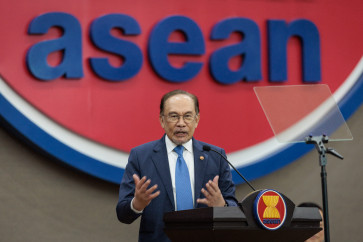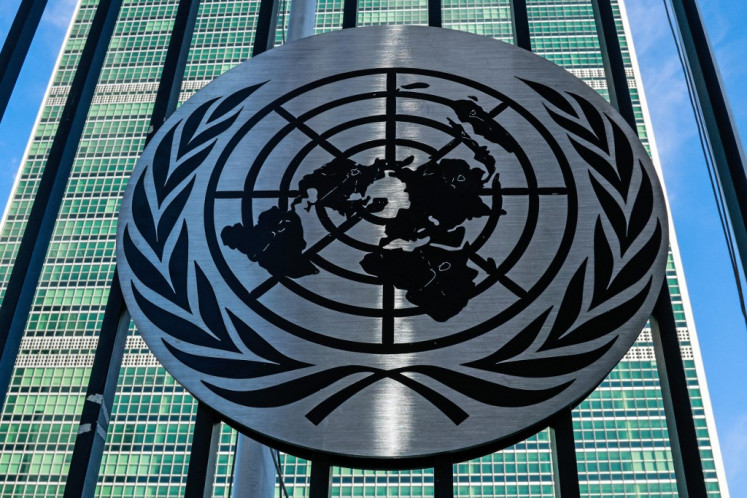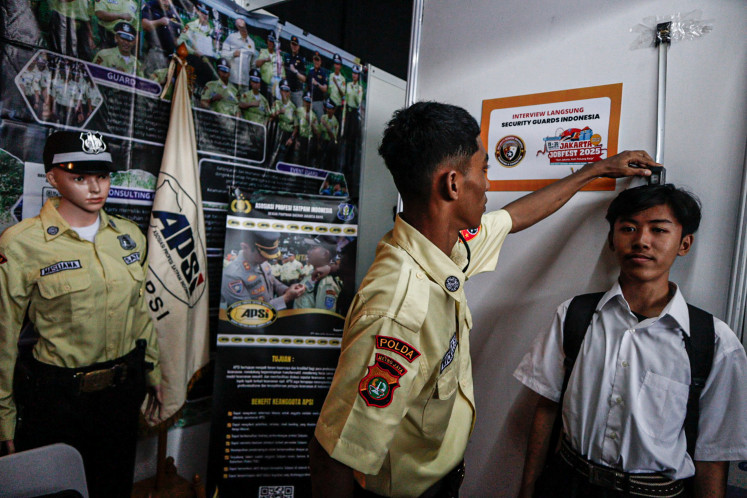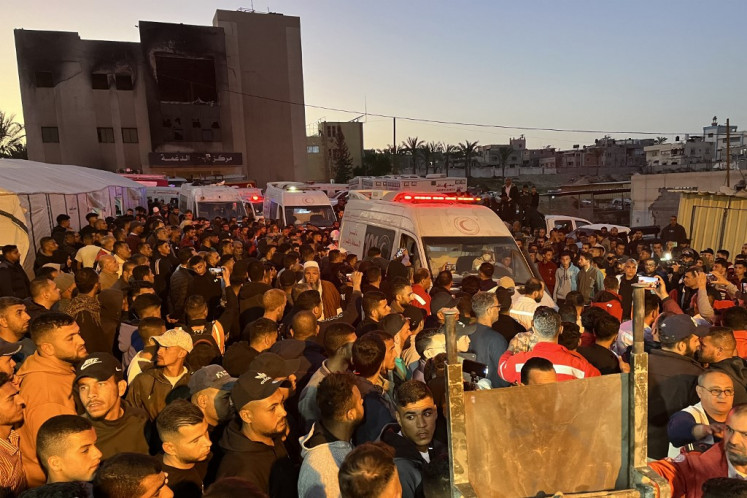Popular Reads
Top Results
Can't find what you're looking for?
View all search resultsPopular Reads
Top Results
Can't find what you're looking for?
View all search resultsRI airlines in spotlight after crash
Publicly listed Indonesian airlines' financial reports show decreasing maintenance and repair costs, but experts have expressed confidence that airlines will not compromise safety.
Change text size
Gift Premium Articles
to Anyone
I
ndonesian airlines’ fleet maintenance and finances are under scrutiny, amid wide calls for better safety supervision after a deadly crash involving private carrier Sriwijaya Air.
Publicly listed Indonesian airlines' financial reports show decreasing maintenance and repair costs, but experts have expressed confidence that airlines will not compromise safety.
While Sriwijaya Air’s current financial performance is undisclosed, the airline has been financially struggling for years, especially after its partnership with national flag carrier Garuda Indonesia was terminated in 2019. Based on Garuda and its aircraft maintenance firm arm GMF AeroAsia’s financial statement, Sriwijaya Air owes Garuda US$37.5 million and GMF AeroAsia $54.3 million as of September 2020.
In September 2019, an internal note written by Sriwijaya Air former quality, safety and security director Toto Soebandoro was leaked and went viral. In it, he recommended a cease of operations as the airline did not have the inventory of tools and equipment, as well as minimum spare parts and qualified engineers it claimed to have in a report submitted to the Transportation Ministry and that it had yet to secure a partnership with several aircraft maintenance firms.
“We recommend that Sriwijaya Air stop its operation on its own initiative or be shut down to adjust with the capabilities for the next few days, due to safety reasons,” the letter reads.
Toto also prompted two of the airline’s directors to resign due to a conflict of interest.
Sriwijaya Air has had to park 12 of its 18 airplanes, excluding its regional service NAM Air, according to website planespotters.net, as the pandemic battered demand for air transport. The fleet has an average age of 17.4 years.
Sriwijaya Air’s ill-fated Boeing 737-500 aircraft, which crashed on Jan. 9, was also parked from March until December, according to the Transportation Ministry, which sparked concerns over a warning made by the United States Federal Aviation Administration (FAA) in 2020 of possible corrosion on idled Boeing 737 planes. The ministry then reiterated in a statement that the plane had been checked and certified airworthy.
Sriwijaya Air executives and spokespersons were not immediately available for comment.
Now an aviation observer, Toto confirmed that parking planes was a cost-saving measure for airlines. He said that amid fewer passengers during the COVID-19 pandemic, airlines around the world had to close routes and operate fewer aircraft.
“Putting aircraft into storage can be a cost efficiency measure for airlines because there will be flight hour-based maintenance. However, they still need to pay for parking and storage rent, for example,” he told the Jakarta Post on Wednesday.
Aviation has been one of the worst-hit sectors during the pandemic, as people cancel travel plans amid health protocols and border restrictions.
National flag carrier Garuda Indonesia has booked $1.07 billion in losses as of September, a reversal from the $122.4 million profit it saw in the same period in 2019. The financial loss came after Garuda’s revenue plunged 67.8 percent year-on-year (yoy) to $1.13 billion in the first nine months of 2020, according to the company’s financial report.
Its maintenance and repair expenses also went down by 14.3 percent to $337.5 million by the third quarter of last year, from $393.5 million over the same period in 2019.
Similarly, low-cost carrier Air Asia has recorded Rp 1.7 trillion ($120.7 million) in losses as of September last year, a stark contrast from the Rp 422 million profit it posted in the same period in 2019.
AirAsia’s repairs and maintenance costs were down by 48.1 percent to Rp 400.92 billion in the first nine months of 2020, from Rp 773.63 billion in the same period in 2019.
Garuda Indonesia had not responded to the Post’s inquiries at the time of writing. AirAsia declined to comment on the matter.
However, Indonesian National Air Carriers Association (INACA) chairperson Denon Prawiraatmadja said there was no direct correlation between airlines' revenue and their maintenance procedure as most airlines had maintenance contracts with aircraft manufacturers.
“As long as there is a contract, maintenance activity will be conducted. So, lower [airline] income does not mean maintenance services will stop. If an aircraft is not yet maintained, either by choice or because it is not its maintenance schedule, then it will not be flown,” he told the Post on Tuesday.
Aviation observer Gerry Soejatman echoed the statement, saying that despite lower demand and revenue, airlines would not compromise their maintenance procedures and instead would opt to cut wages or furlough workers.
Sriwijaya Air, he said, also worked on cash payments for their maintenance. This means that if it has not paid fully for maintenance, their aircraft will not be worked on.
The Sriwijaya crash is the latest in a long list of major accidents the country has seen.

